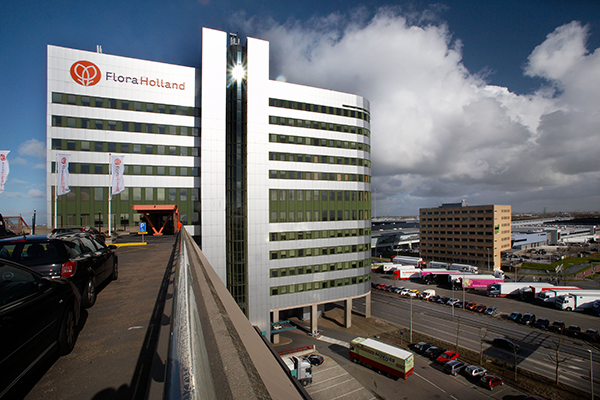Royal FloraHolland posted an annual revenue of €5.2b in 2022 – down eight per cent from 2021- and a net loss of €4m for the year 2022.
The number of products traded decreased by seven per cent to a total of 10.8 billion. High energy costs for growers mainly caused a decrease in supply volumes. The average price was two per cent lower than in 2021. High inflation rates offset this.
After-tax, Royal FloraHolland’s operating profit was a loss of €4m, caused by a €5.7m write-off on the bankrupt Floriworld and €11.4m higher energy costs. Cost-saving initiatives helped limit losses.
At the presentation of its annual figures today in Naaldwijk, CEO Steven van Schilfgaarde said that floriculture has the ambition to become CO2 neutral in the long run. This requires substantial investments in wind and solar energy, geothermal energy and using residual heat from industry. “The government’s plan to adjust energy taxes for greenhouse horticulture have major financial consequences for our sector. Wageningen University calculated that, based on these measures, greenhouse horticulture will face a huge increase in costs from 2025 onwards. For ornamental horticulture, this amounts to hundreds of millions more every year. The government’s policy thus stands in the way of the necessary investments in the energy transition. Especially at this stage. This puts unnecessary further pressure on the international position of the Dutch floriculture sector. The same applies to the Netherlands’ role as the hub of the global floriculture sector. We are jointly taking action with all parties to ensure that the cabinet does not implement this proposed burden increase.”
Both demand and supply were unpredictable in 2022. Cancelled orders by international retail companies unexpectedly increased the supply on the clock, while the labour market, especially for logistics staff, was very tight. This caused bottlenecks in the logistics operation at Royal FloraHolland, resulting in less than intended logistics services.
Against the trend, the clock share increased slightly to 40 per cent. The growth of the digital platform Floriday continued. In 2022, an average of 33 per cent of direct transactions went through Floriday, with a visible upward trend during the year, accelerating further in 2023. By week 10 of 2023, the percentage was already 56 per cent. Every week, 5,500 growers and buyers from 45 countries use Floriday. Royal FloraHolland has over 600 international members. They account for 18.2 per cent of sales on the marketplace and, on the clock, as much as 29.1 per cent.
Commenting on the cooperative’s financial balance sheet, CFO David van Mechelen said: “In April last year, based on the insights at the time, I did not rule out that we would make a big loss in 2022. Despite sharply increased energy costs and the write-off on Floriworld, we managed to limit the loss to €4m. We managed to make substantial cost savings last year. The house is in good shape thanks to our Basics Right programme. We also took a number of additional measures, such as a hiring freeze on non-logistics positions. But at the same time, we consciously took care not to hamper the speed of strategy implementation. Last year, we invested 90 million euros in our future, in Floriday, new logistics, IT renewal, property maintenance and the development of Aalsmeer-Oost, among others. That is 22 million more than in the previous year.”







